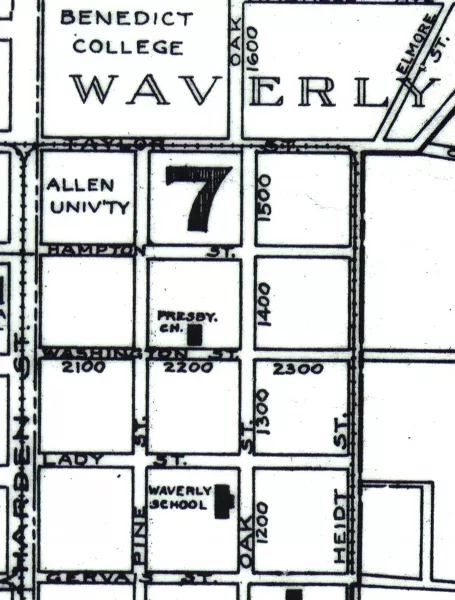Waverly Historic District
The Waverly Historic District’s original neighborhood covered a twelve-block area east of Columbia’s late-18th century city limits. Once part of a plantation owned by Robert Latta, by the late 1800s it became one of the first documented suburbs in Columbia. In 1913, Waverly was one of two suburbs annexed by Columbia. Although initially home to both white and black residents, as the South became increasingly segregated during the Jim Crow era, Waverly evolved into a self-contained, self-sustaining black community with a broad socio-economic demographic. Girded by the presence of two colleges, myriad of churches, a hospital and nurse training facility, as well as numerous stores and small businesses, Waverly featured many middle- and upper-class African American residents, many of whom were leaders within spiritual, business, academic, and professional circles, as well as those in the service industries. Over time, this community expanded to encompass the streets south of Gervais Street. Those streets included the homes of many civil rights activists, including George A. Elmore, and sites found in the Negro Travelers’ Green Book.
